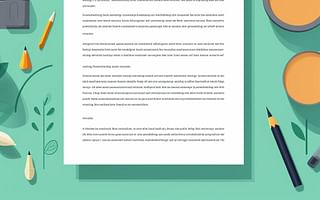📚 Mastering the Art of Synthesis Essays: A Step-by-Step Guide
Are you struggling with writing a synthesis essay? Don't worry, we've got you covered! At Superior Formatting, we have created a step-by-step guide to help you master the art of synthesis essays. Let's dive in and discover the secrets to crafting a stellar synthesis essay.
Step 1: Understand the Assignment
Before you start cooking up your essay, it's crucial to understand the assignment. Take the time to grasp the topic and what is expected of you. Are you comparing different sources? Analyzing arguments? Knowing this will guide your research and writing process. Just like a confused chef can lead to a disastrous meal, a clear understanding of your assignment is the key to success.
Step 2: Do Your Research
Now that you know what you're making, it's time to gather your ingredients. In this case, your ingredients are the sources for your essay. Read them carefully, highlight important points, and make notes. The better you know your ingredients, the better your essay will be. However, be cautious not to go overboard with too many sources. Just like too many ingredients can spoil a dish, too many sources can overwhelm your essay.
Step 3: Craft Your Thesis Statement
Your thesis statement is like the recipe for your essay. It tells the reader what your essay is about and how it's structured. Make sure your thesis statement is clear, concise, and arguable. Just like a good chef never reveals all their secrets in a recipe, keep some suspense in your thesis statement.
Step 4: Outline Your Essay
An outline serves as your cooking plan. It helps you organize your thoughts and ensures a logical flow of ideas in your essay. Think of it as a roadmap that shows what goes where and when. An outline also saves you from the horror of forgetting to include an important point in your essay. So take the time to create a solid outline before you start writing.
Step 5: Write Your Essay
Now it's time to start cooking, or in this case, writing! Begin with an engaging introduction that hooks your reader. Then, in the body paragraphs, blend your ingredients (sources) to support your thesis. Finally, wrap up with a conclusion that leaves a lasting impression. Remember, presentation is key, so make sure your essay is well-structured and easy to follow.
Step 6: Review and Edit
Just like a chef tastes their dish before serving, you need to review and edit your essay. Check for errors, inconsistencies, and areas that can be improved. A well-edited essay showcases your attention to detail and enhances the overall quality of your work. So don't skip this crucial step!
By following these steps, you'll be well on your way to mastering the art of synthesis essays. Remember, practice makes perfect, so keep honing your skills and refining your writing. For more comprehensive guides on essay formatting, outline templates, and other essay types, visit Superior Formatting. Let us help you make your essays stand out with our superior formatting tips and techniques. Happy writing!














